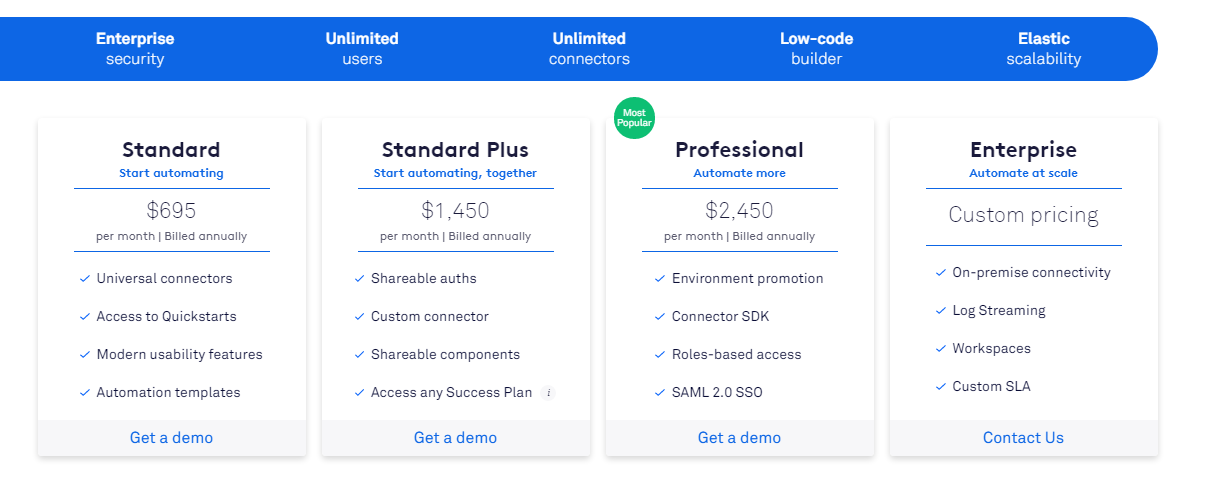This Tray pricing section is effective for several reasons:
1. Clear Hierarchy and Visual Appeal:
- Distinct Tiers: The “Standard,” “Standard Plus,” “Professional,” and “Enterprise” tiers are clearly labeled and visually separated.
- “Most Popular” Label: The “Professional” tier is highlighted as “Most Popular,” guiding user choice.
- Consistent Layout: Each tier follows a consistent layout with pricing, descriptions, features, and call-to-action buttons.
- Visual Cues: Checkmarks are used to indicate included features, enhancing readability.
- Clear Headings: The headings clearly indicate the purpose and target audience of each tier.
- Pricing Clarity: The monthly prices are prominently displayed for the “Standard,” “Standard Plus,” and “Professional” tiers.
- Call to Action Buttons: The “Get a demo” and “Contact Us” buttons are visually distinct and clearly labeled.
- Top Row Highlight: The top row of headings clearly highlights the main value propositions of the product.
2. Value-Based Differentiation:
- Targeted Descriptions: Each tier has a concise description that clearly identifies the target customer and their needs.
- Feature Progression: The feature lists clearly show the increasing capabilities of each tier.
- Specific Feature Differentiation: Features like “Custom connector,” “Connector SDK,” “On-premise connectivity,” and “Custom SLA” differentiate the higher tiers.
- Quantitative Differentiation: The differences in monthly prices provide clear quantitative differences.
3. Transparent Pricing:
- Clear Pricing Information: The monthly prices are clearly stated for the “Standard,” “Standard Plus,” and “Professional” tiers.
- Custom Pricing: The “Enterprise” tier uses “Custom pricing” and “Contact Us,” indicating a tailored solution for larger clients.
4. Addressing Different User Needs:
- Basic Automation: The “Standard” tier caters to users just starting with automation.
- Collaborative Automation: The “Standard Plus” tier is designed for teams needing collaborative automation features.
- Advanced Automation: The “Professional” tier caters to users needing more advanced automation capabilities.
- Enterprise-Level Needs: The “Enterprise” tier caters to organizations needing enterprise-level features and scalability.
5. Strategic Use of Information:
- Benefit-Oriented Features: Features like “Universal connectors,” “Shareable components,” “Roles-based access,” and “Workspaces” highlight the value of each tier.
- Clear Call to Action: The call-to-action buttons provide clear paths for action.
- Feature Lists: The feature lists clearly show the differences between the tiers.
- Concise Descriptions: The descriptions are brief and to the point, making it easy to understand the purpose of each tier.
- “Most Popular” Highlight: The “Most Popular” label on the “Professional” tier influences user choice.



